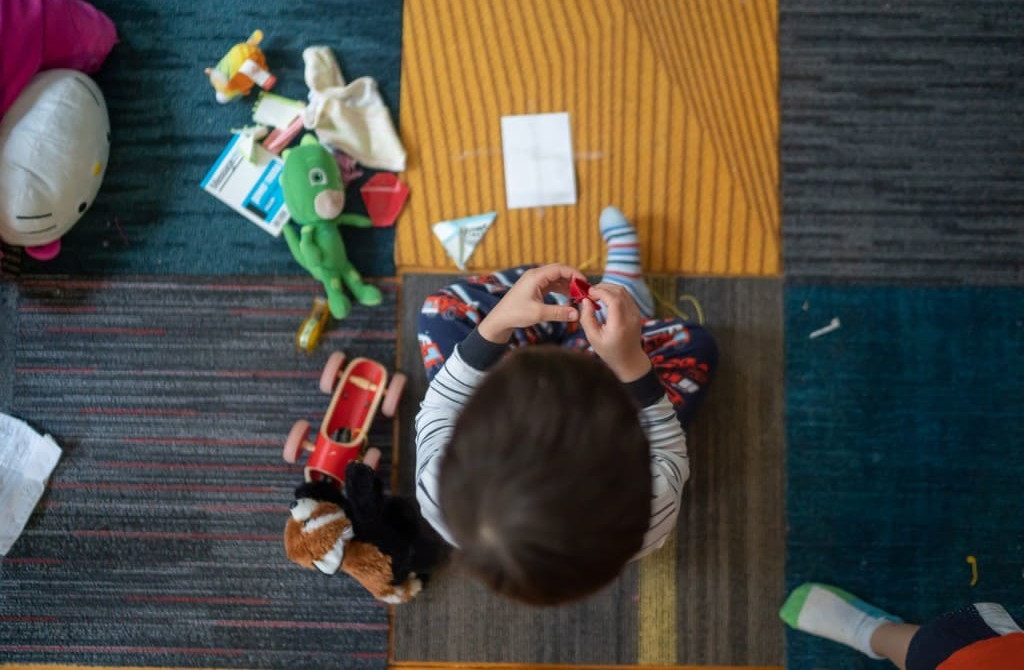
One of the amazing things about being a parent is watching your child develop their imagination and start to interact with the world around them. This starts in toddlerhood and is such a special time.
Your little one, who is just finding their feet, will pick up a building block, hold it to their ear and try to imitate you on the phone. At around 2-years-old you might catch your child putting their doll to sleep, or feeding it from a bottle. And by age 3-4 years-old get ready for pretend tea parties, make-believe battles, role-playing scenarios with dolls and figurines. An imaginary friend might even make an appearance—this is all completely normal!
Pretend or imaginary play is a part of your child growing up. It’s vital for their development and they learn a lot of awesome things from imaginary play—language, problem solving, handling emotions and social situations.
Here’s how!
- Watch your child having a pretend tea party, you might find them using new phrases and words you didn’t even know they knew. They are constantly listening to everything happening around them and using the words they pick up. There might even be a situation being played out that they came across in real life—this form of pretend play will help them deal with and work it out.
- Your child and their friends are dressed up and involved in imaginary play. Yes, they are having fun. Yes, they are playing. But your child is also learning to be in character, and knows that the world doesn’t revolve only around them. The kids while playing make-believe will learn to work together and take turns.
- When your child is busy, for example, turning an empty cardboard box into a rocket ship, they are developing their problem solving and decision-making skills. Yes, you read right! They’ll be deciding on what colour to paint it, figuring out where to put what, redesigning the piece of cardboard till it meets their exact specifications of what the rocket ship should look like.
The Imaginary Friend
There might come a time in your young child’s life, mostly between the ages of 3 and 11 years, where they will have an imaginary friend. There isn’t any real science behind why this happens and not all kids develop one. But, if your child does have an imaginary friend, please know that there is nothing to worry about.
As a matter of fact, having an imaginary friend allows your child to develop their imagination and creativity. In your young one’s head this ‘friend’ is very real and they have proper interactions with them. An imaginary friend can even be a source of comfort to your child. Allowing them to better cope during a difficult or fearful situation.
When to take action
For your child, their imaginary friend is someone they see and talk to. So they might expect you to do things for the friend as well, such as make room on the sofa, or make an extra snack. Play along when possible. Ask them questions about the friend.
But there will be times when your little one might blame their fictional friend for a mess they’ve made, or needing to consult said friend before doing something. In these moments be strict, tell them they have to clean up the mess, or decide for themselves what they want.
While it’s very, very rare, sometimes pretend play can get out of hand. There can be unkind behavior, or blaming imaginary friend for manipulative behavior. Intervene in a calm manner, and make sure that your child knows that that behavior isn’t on. Otherwise just let your child enjoy playing and growing.
Finally, there’s a therapeutic element involved when your child is pretend playing or interacting with a fictional friend. Allow them to indulge in it. Ask your child questions and learn more about their thoughts and what they are feeling. You could also use your child’s pretend play and imaginary friends to teach them life lessons and explain real life situations. While your child enjoys this phase, you should too.